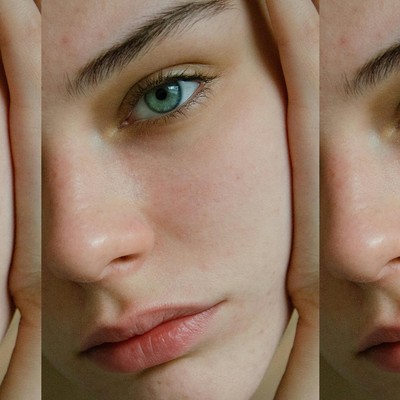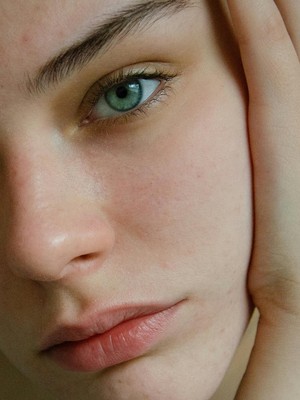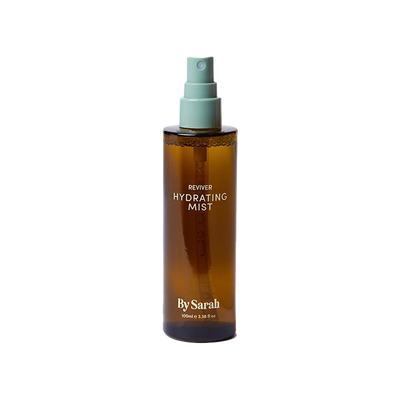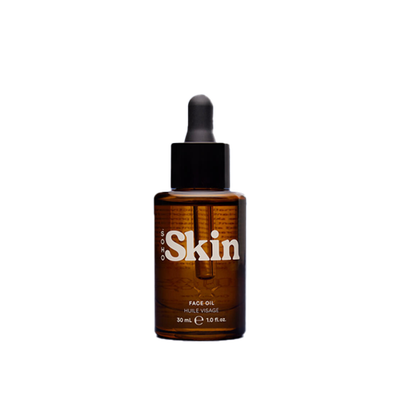

What You Need To Know About Rosacea & How To Treat It
All products on this page have been selected by our editorial team, however we may make commission on some products.
Understand The Causes
Readers in the SheerLuxe Community often ask for tips to soothe rosacea, but experts agree, it’s important to understand the causes first. Dermatologist and advanced nurse Amanda Azzopardi explains: “The exact causes of rosacea are still unknown, but we do know there are key triggers that result in temporary flare-ups. That includes exposure to sunlight, stress, spicy foods, alcohol and certain medications. That’s why it’s important to pay attention before you start overloading your skin with treatments. Keep a diary and work backwards from there.”
Consultant dermatologist, Dr Justine Kluk agrees: “The range of possible causes put forward by researchers includes defects in the immune/nervous system and facial blood vessels. It can also be due to abnormal composition of your skin’s microbes (the microbiome). It can be genetic, but as mentioned, everyone with rosacea has specific triggers.”
Know The Difference
It’s not uncommon for some to believe they have rosacea when it’s simply flushing, so it’s important to know the difference. “Rosacea is a long-term skin condition that’s characterised by regular facial redness,” explains Justine. “Although more than 5% of the population are affected, the diagnosis may be delayed or missed for months – even years – if people don’t see a doctor who recognises the condition. It often starts in our 30s and tends to be more common in those with paler, white skin. That said, those with darker skin tones can be affected too. If your skin feels warm all the time, flushes easily, you have breakouts that acne treatment won’t clear, or any burning when you apply products, please report these to your GP or dermatologist as they may indicate you have undiagnosed rosacea.”
Identify The Symptoms
One of the first symptoms is a tendency to flush or blush more easily, but there’s more down to rosacea than a reddening of the skin. Justine continues: “With time, sufferers may develop permanent redness of the nose and cheeks along with a multitude of other unpleasant symptoms, such as spots, dilated blood vessels, skin dryness and scaling, burning and stinging, and sensitivity to multiple skincare products. Swelling of the nose or cheeks is called ‘phymatous rosacea’ but this is much rarer. Gritty or sore eyes due to inflammation of the eyelids (blepharitis) can also be a feature in some people.”
See Where It Happens
Rosacea typically appears on the face, but it may occur elsewhere, too. “Most commonly, you’ll find inflammation, redness and tenderness over your cheeks, but it can also affect the skin on your chest and at the back of your neck. Look out for small bumps that have a warmth to them or a burning sensation. It’s more likely to show up on those with fairer skin – these skin types are also more likely to develop it – whereas those with darker Fitzpatrick skin types (you can check the scale here) may find their rosacea is a bit more invisible, if they get it at all,” says Amanda.
Choose Products Wisely
When choosing skincare, experts agree it’s key to keep your routine simple and stick to brands that specialise in sensitive skin. “I recommend using a mild cream or gel cleanser for washing your face,” says Justine. “Massage it gently into your skin morning and night, before rinsing off with lukewarm water. Try using soft cotton pads or a flannel if splashing with water makes you flush. It’s also key to find a broad-spectrum facial SPF 30 or 50 and apply it every morning, 365 days a year. UV exposure is one of the most common reasons for rosacea to flare up, even in cloudy weather, so this is a product that’s essential.”
Find The Right Ingredients
If you suffer with rosacea, the ingredients you use in your skincare are essential to keeping the condition under control – Justine expands: “Ingredients like azelaic acid can help reduce the inflammation, redness and spots of rosacea. Layer a product containing this under your sunscreen in the morning and 15 minutes or so before you apply your night-time moisturiser. Avoid other known skin irritants like acids or retinol unless under the supervision of a specialist. Wherever possible, get testers or samples to try at home before committing to bulk purchases of any new skincare product. Do a patch test on a small area before applying to your whole face if you have very reactive skin.”
Amanda adds: “Always seek out gentle, non-irritating ingredients. That includes niacinamide, ceramides and green tea extract – rosacea sufferers can trust these entirely. On the other hand, ingredients like fragrances, menthol and camphor are to be avoided as they can irritate and inflame existing rosacea.”
Ignore These Misconceptions
Like any skin condition, rosacea comes with misconceptions and often it can be misunderstood. Amanda explains: “So many people still believe rosacea is a result of poor hygiene, alcoholism or an overly stressful life. In reality, none of these factors are the cause. Yes, they may contribute to a flare-up, but they’re absolutely not influencing its arrival. It’s also not a contagious condition, which some still believe is the case.”
Do Your Research On Make-Up
It’s not just your skincare that needs consideration – your make-up can go a long way in neutralising the redness of rosacea and boosting skin confidence. “Look for foundation and concealer formulas that have a green pigment to them as these can also be helpful,” recommends Justine. “Charities such as Changing Faces can also provide advice and thorough information on skin camouflaging and put you in touch with others who are similarly affected. Vichy does some brilliant foundations for those with rosacea – they are gentle too and never aggravate the skin.”
Finally, Know Your Treatment Options
At present, there is no cure for rosacea. However, there are several options that can bring symptoms under control. Justine expands: “The choice of treatment depends on the symptoms you have. If flushing is your most troublesome symptom, oral medications otherwise used for anxiety or menopausal flushing may be recommended. As mentioned above, avoiding triggers is also crucial for this type of rosacea. For more severe cases, a course of oral antibiotics may be recommended to reduce breakouts, swelling and inflammation. Courses may be repeated from time to time if you have a flare-up and control can be maintained with prescription creams or gels in between. Above all, advice from an expert or dermatologist will give you more answers, so always speak to a professional first.”
Check out our SL Community for further advice & product recommendations.
SHOP OUR ROSACEA EDIT
DISCLAIMER: We endeavour to always credit the correct original source of every image we use. If you think a credit may be incorrect, please contact us at info@sheerluxe.com.







